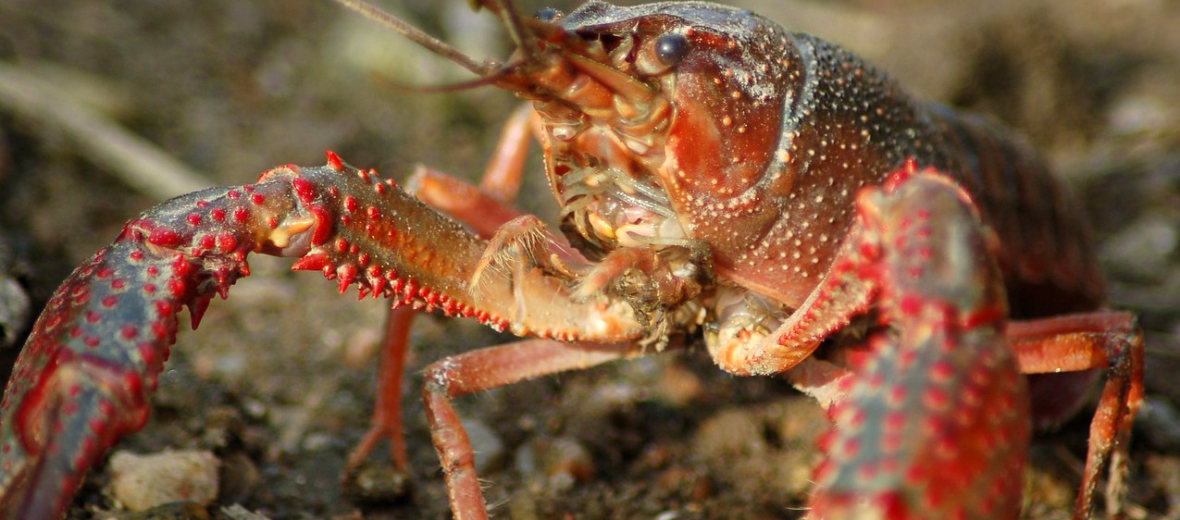
The crayfish, aka crawfish, craydids, crawdaddies, crawdads, freshwater lobsters, mountain lobsters, rock lobsters, mudbugs, or yabbies, is a freshwater crustacean that can be found throughout the world; sans Antarctica. These crustaceans can sometimes be considered invasive, as they will tend to take over many habitats. While many crayfish are listed as Least Concern, there are some listed as precariously as Critically Endangered by the IUCN.
First the Stats…
Scientific name: Parastacoidea
Weight: Up to 3.8 ounces
Length: Up to 4 inches
Lifespan: Up to 20 years
Now on to the Facts!
1.) They can be blue, green, white, red, or yellow.
2.) These crustaceans walk forward and swim backward.
3.) Crayfish are omnivores (eat plant and animal matter) that feed on aquatic eggs, dead fish, decaying vegetation, plankton, algae, their molted exoskeleton, and even each other.
4.) Crawdads are preyed on by raccoons, muskrats, red foxes, water snakes, eastern painted turtles, a variety of birds, and humans.
5.) Paragonimiasis is a parasitic disease that is caused by Paragonimus trematodes, aka lung flukes. This infestation can also infect humans who eat under-cooked or raw crawdads. This illness is called paragonimiasis.
But wait, there’s more on the crayfish!
6.) Louisiana is the supplier of 90% of the crawdads eaten in the United States.
7.) There are approximately 500 known species of crayfish found in the world, and more than 350 of those species live in the United States. Only 2 species are actually collected or farmed and eaten.
Did you know…?
The Tasmanian giant freshwater crayfish (Astacopsis gouldi) is the largest known crawfish in the world. These monsters can get up to 13 lbs. and measure up to 31 inches long.
8.) These critters have been around for approximately 150 million years.
9.) The crayfish is the official crustacean of the state of Louisiana.
10.) 1/4 lb. of crayfish contains 82 calories.
But wait, there’s still more on the crayfish!
11.) Not only do crawfish have very good eyesight, but they can also move their eyes independently of one another. What other critter can do this? A chameleon, perhaps?
12.) The Protivin brewery in the Czech Republic utilizes crawdaddies equipped with special sensors used to detect minute changes in their body and their pulses in order to monitor the purity of the water used in their alcohol. If they register enough of a change, then an investigation is conducted to determine what is happening.
13.) Crawdads are also kept as pets. However, it is strongly urged not to EVER release them into your local water body, like a lake, river, or stream, as they can very quickly become invasive, problematic, and a burden on local wildlife.
14.) Also, it is ill-advised to use them as bait, for fishing. If they get away, and they usually do, then you have now just initiated a potential huge problem into that body of water. Don’t be that person.
Now a Short Crayfish Video!
Be sure to share & comment below! Also, check out the Critter Science YouTube channel. Videos added frequently!
Want to suggest a critter for me to write about? Let me know here.



